Back in India it was striking how much more wealthy it was compared with Bangladesh. Lots more private cars and more substantial buildings, a general feeling of more money about, a greater sense of freedom, particularly for women, but there was less colour. Buildings were blander and rickshaws and trucks not so heavily decorated. The script had changed too from Bangla to a lot of Roman script signs and it was nice once more to be able to read what things are as we pass by.


It was not long before we were climbing gentle hills through tea gardens, the uniform bushes like a green neat carpet following the contours of the land under the shade of tall trees, and rubber plantations, with their coconut shell bowls hanging below the carefully cut and twisted strip of bark from where the rubber drips. The landscape had changed greatly in a short distance from the delta of Bangladesh. It soon became wilder, less cultivated and jungle covered the hills. The air was filled with exotic bird song, and there was a feeling of emptiness and tranquility after busy densely populated Bangladesh. Islam had given way to Hinduism and there were many gaudy slightly creepy Hindu god effigies by the road side.
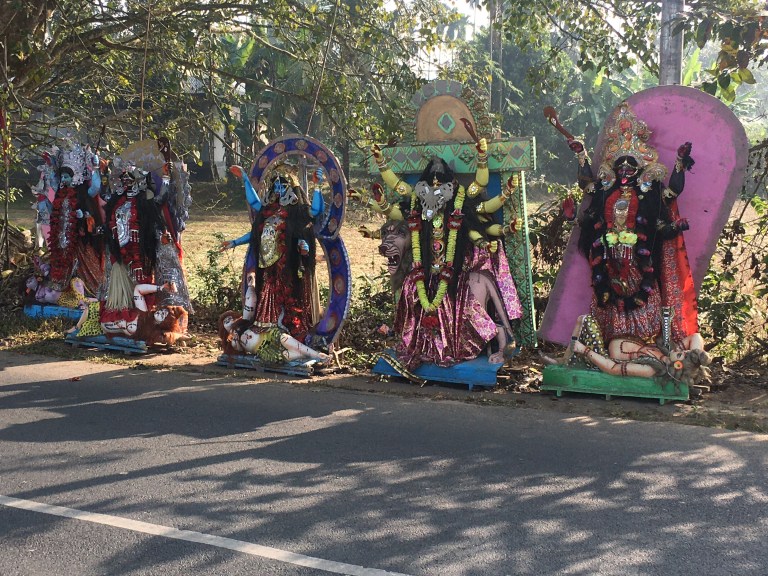
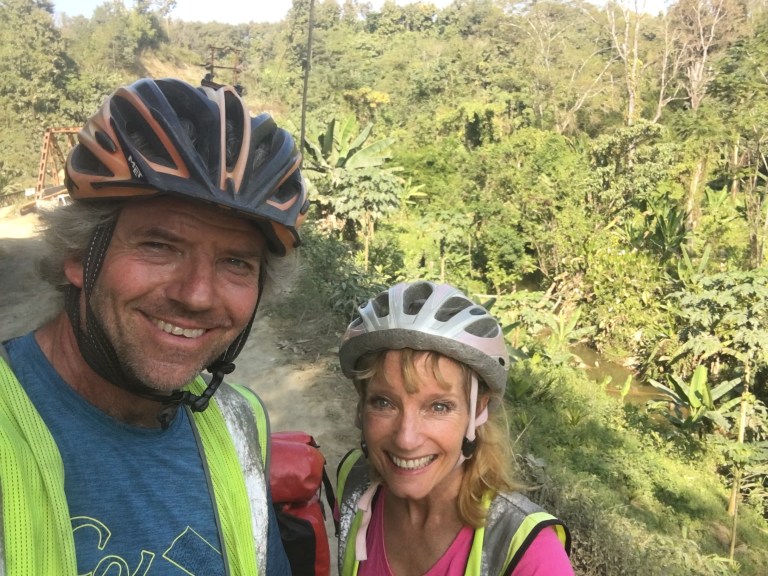
The hills got bigger, the jungle thicker and the roads started to snake about. The houses started to look different, made from woven bamboo sheets with small shaded verandas to sit out on or store wood, and sometimes on short stilts.
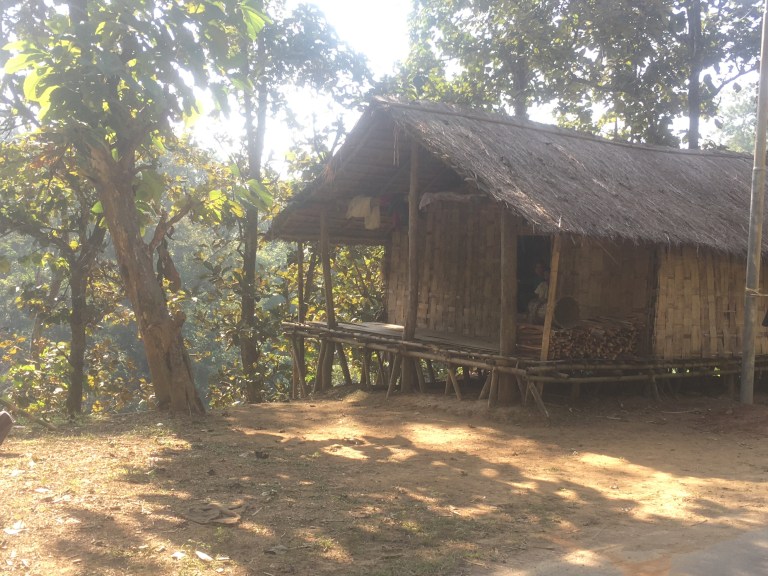
We crossed a series of jungle clad ridges through Tripura. As we climbed each one the people became more oriental looking and tribal, perhaps Tibetan descent and animist mixed with Hinduism, the houses stilted and traditional, set in small groups on the tops of hills. People carried loads in baskets on their backs supported by bands across their foreheads, similar to Sherpas in Nepal. Women sat about smoking bamboo pipes. Men returned from the forest. We had nice chats with them using no language, just gesture and smiles. As we descended the ridges the faces changed back to lowland Indian, loads were carried on heads or on bikes and carts, mainstream Hinduism returned and you felt you were back in India. This sequence was repeated several times and we eventually merged into Mizoram, where the jungle mountains folded steeper, stretching out to Burma far in the distance. We had only left Bangladesh a day and half ago and so much had changed in a relatively short distance cycling. 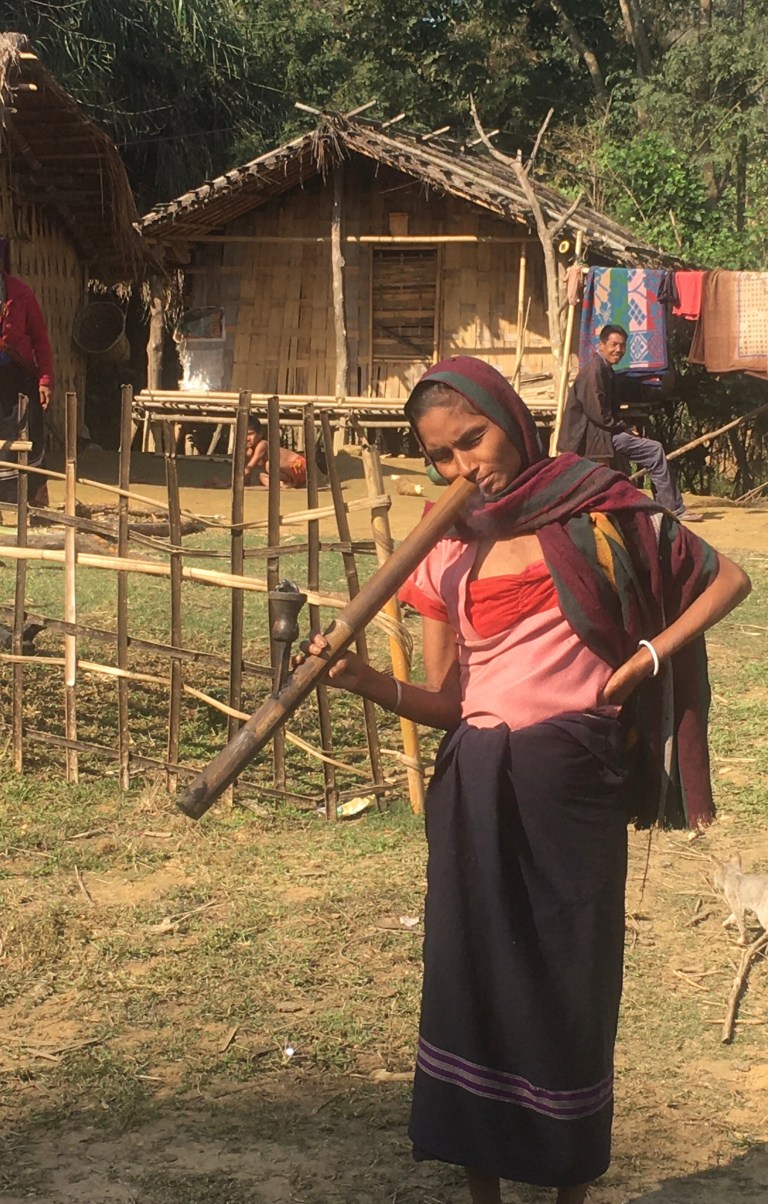


One valley after another had to be crossed. Settlements perched on the ridges and and vibrant luxuriant rivers with arching bamboo, banana palms, and a labyrinth of vegetation, ran through the valleys.

The people were now looking almost entirely oriental, with very few lowland Indian looking people, we were approaching the Far East.


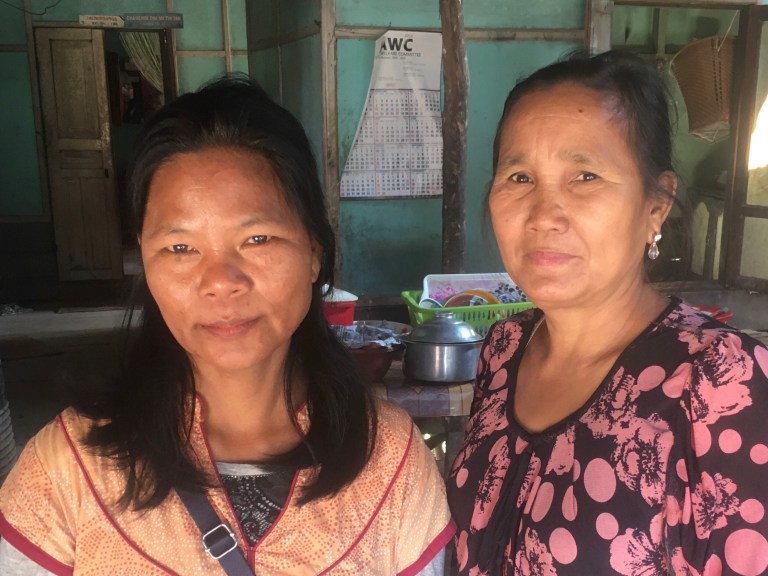

The stilted houses clinging to the mountainside had become more elaborate and substantial. Constructed from wood they have verandas out front, a large living area in the centre which often opens out to the back of the house looking out across the valley, with polished clean floorboards and some pretty fancy furniture. A kitchen area leads off one end and bedrooms off the other. People sit out front chatting and there are neat small ornamental front gardens with hedges and flowers in pots. They wave and call out happy journey to us with beaming smiles. Villages stretch out longitudinally along hillsides.
Mizoram is almost entirely Christian and the Mizo language sounds Burmese. There appears to be more wealth in this forgotten corner of India sandwiched between Bangladesh and Burma. English was much more widely spoken. The Mizo don’t speak Hindi and this feels like a separate nation from India. The Mizo are proud progressive people. Things are very ordered and gender equality is important. Women wear brightly patterned sarongs and T-shirts. It’s so nice women talk to us just as much as men, their English is just as good and it’s refreshing not to have men barging in and taking centre stage with dull repetitive conversations. Such a difference from lowland India and Bangladesh. There is quietness too, traffic is courteous and they don’t use the horn. The people are kind, and when we stop at a village there is customary hand shaking with everyone. We are often given tea, cake and fruit and always as a present. Eating places are much less profuse than in the lowlands and are very different. Gone are the big bubbling pots out the front with numerous people milling about, someone rolling parathas on a piece of wood on the floor, and a heap of metal plates lying in the corner. These places have neat tables with plastic tablecloths, food is prepared on a counter, mugs and plates are on racks drying on shelves.

This Indian enclave, nirvana, serenity, seemed perfect set in these jungle hills. We chatted with many to find out more: the political scientist and teacher as we sat on a bench in the back of a shop drinking coffee; the young girl studying for her masters in tribal studies; the young lad mixing concrete on a building site who had a MBA from the London School of Commerce; and the wiry elegant man running the tea shop next to a bridge set in lush jungle who sadly told us three of his five children had died as a result of drug and alcohol misuse. Mizoram appears to have wealth, and it’s split pretty evenly. There doesn’t seem to be the normal massive diversity of wealth. There aren’t the mansions and there aren’t the very poor housing and squalor that occurs across India and the third world. It’s pretty even and the Mizo have extremely high literacy rates comparable with any European country. There aren’t really any jobs here, particularly for young people who seem to spend a lot of time playing computer games on their phones, as our tribal studies student tells us. It’s an enigma why this place seems so content. Some send money back from working as maids and clerics for Chinese families and businesses in China and Singapore. There is a big drug problem too and a lot of drugs from Burma come through this way, but this is also strange that the balance has not been rocked. We did notice a few people in a bad way on Heroin type drugs, but there doesn’t seem to be the crime, banditry, lawlessness, and low life that is normally associated with drug trafficking. There are no drug tycoons’ houses on the hillside behind high walls and barbed wire like we have seen in Albania. We are confused by how this place works. They certainly don’t like Modi, understandably with his views on minorities, and they tell us they are poorly funded from Delhi and central government.


Road building which is always something we see a lot of is very mechanised in Mizoram. Big machines and very few people producing impressive roads through difficult terrain. Road construction has had a big impact on us on all our trips. The going can get really tough when a rough track becomes a destroyed muddle of deep powder and rocks often leading to us having to push the bike for miles and miles. There are always a wide range of approaches to these engineering feats; ranging from large gangs of impoverished workers including women and children breaking rocks by hand, melting and pouring tar over aggregate in a Dickensian way, possibly an old rusting roller belching out black smoke from an over worked diesel compacting there work, to the sophisticated Chinese operations we saw in West Africa, a road building machine. The Mizoram way is similar to the Chinese.

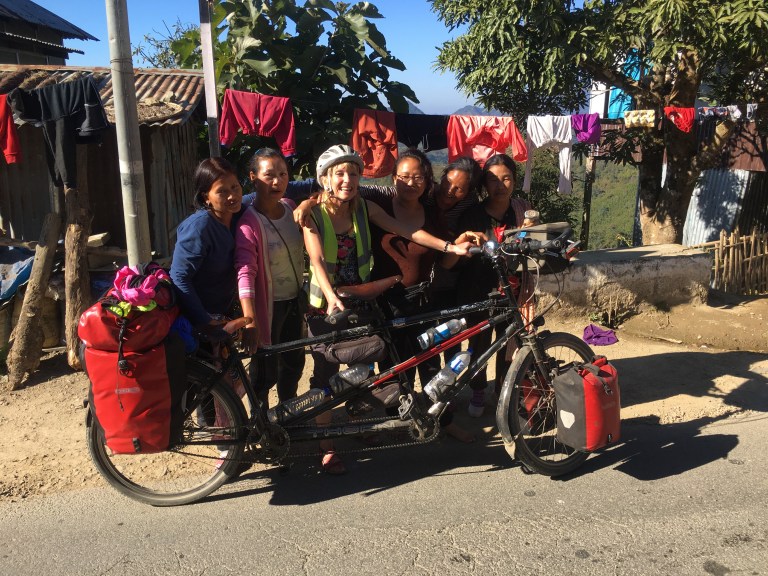
Towering jungle mountains, striking interlocking hills stretched off in the distance through which we weave our way to Burma.
The final valley to cross was the Harhva river, the border between India and Burma. We wound our way down the bumpy track to the border bridge, passing a concrete pour to the roof of someone’s house which I always find fascinating. The whole process of making aggregate from break rocks, sifting sand, mixing concrete and then the task of getting it up the building using a conveyor of many people passing rounded metal pots of concrete to the top where more people are spreading it out. Again these people seemed less impoverished, men and women, well dressed and having quite a laugh. It was one of these lads who had the MBA! Quite a difference from the concrete pours we have seen in India and Nepal. 
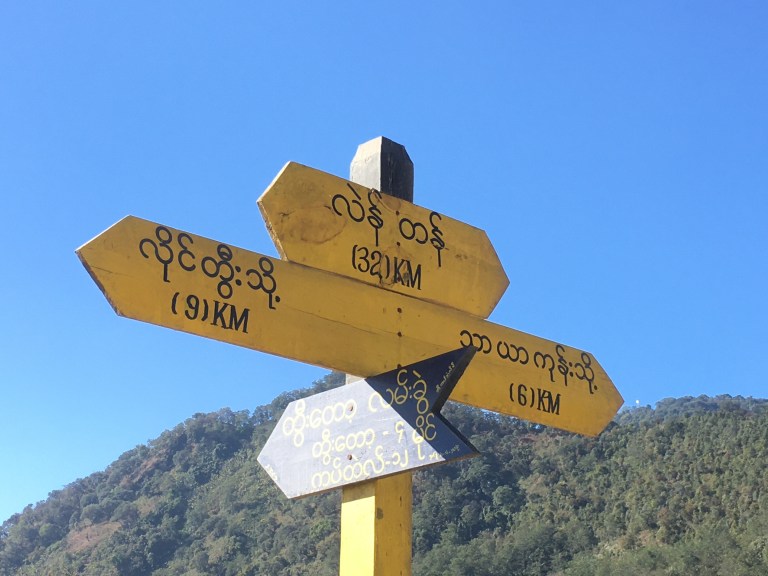

As we approached the metal lattice narrow bridge that spanned the river Harhva connecting the two countries, the Assam Rifles were playing the bagpipes as if they were welcoming us to this remote place. The border was relaxed, people wondering from on side to another freely. Goods were being pulled across on rickety, primitive wooden carts like something from medieval times. Groups of people people struggling to push the carts from one country to another. It was a scene of chaotic small scale commerce. Lorries on both sides loading and unloading, boxes, drums, hessian bundles and all kinds of things. The place was alive and felt like a Wild West frontier town. Whiskey was being repackaged in biscuit boxes to be sent over the bridge to the dry state of Mizoram.


 We walked over the bridge leaving Mizoram and entering Chin. Both groups of people are the same, originating from Yunnan province of China, which is our final destination on this journey.
We walked over the bridge leaving Mizoram and entering Chin. Both groups of people are the same, originating from Yunnan province of China, which is our final destination on this journey.
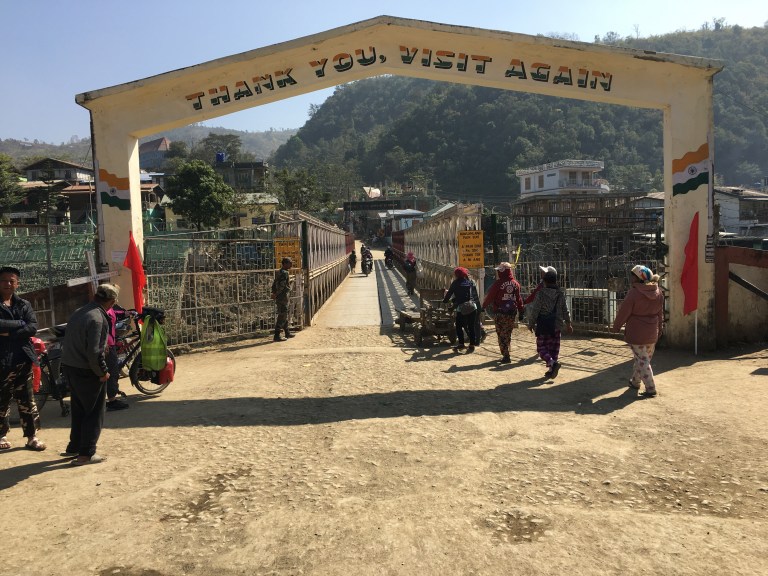


Once over the bridge we headed to Rihl lake, a very special place for the Mizo as it is believed to be the pathway to heaven. It is certainly a surreal peaceful place set with a backdrop of misty mountains.
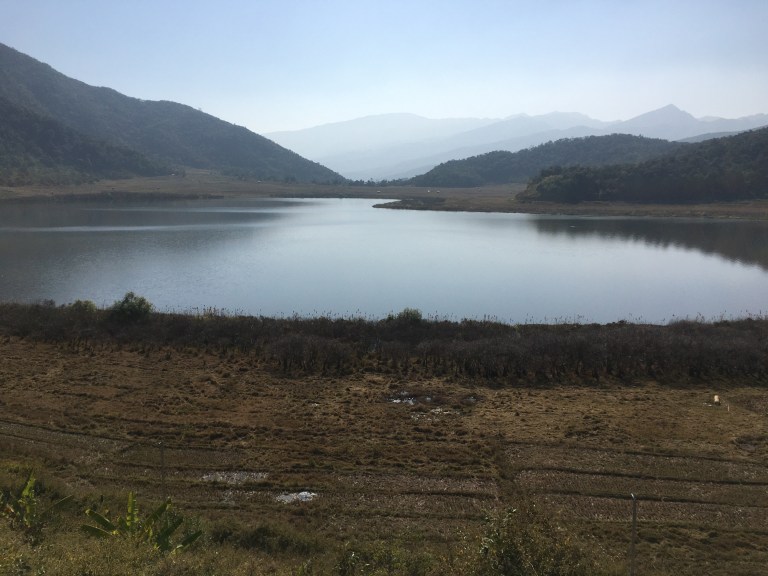
Back in Rihkawdar, our first night in Chin was spent camping in a shop unit as the hotel was full. Our neighbours were an interesting family who were very spread out living in Assam, Burma and Thailand, all involved in the trade of betal nut that is grown in Indonesia and moved through Thailand and Burma. It is used to make pan that people chew as a mild drug causing their mouths to be permanently stained a revolting red colour, their teeth break and they suffer from numerous cancers. Presumably it’s very addictive as it’s extremely popular throughout the Indian subcontinent. It was interesting talking to these people. They were Muslim and sought refuge in Christian Chin District as the chin are sympathetic to other religions. They spoke openly and frankly to us explaining how they moved the betal nut across the border through the forest when the Indian officials block the legal root over the bridge.


Chin is a lot less developed than Mizoram and poorer. Mobile phone coverage is good but the roads are horrendous. The mountains are bigger, so there is a greater challenge resulting in boulder strewn steep tracks covered in powdery sand that kicks up into clouds of dust.



The going was really hard. We snaked our way up the mountains and down the other side far down into ravines only to have to snake back up again. It was punishing, progress was very slow with lots of pushing our loaded bike. Five miles from the top near Tidim, a large lorry stopped, two beaming brothers hopped out and asked if we wanted a lift. It was looking like it we would be travelling into the dark and we had been on the road from before dawn. It was a too good an offer to refuse. We were exhausted, could hardly speak and weren’t making much sense. They were a jolly pair driving their truck between the border and Kale, one had a pan stained mouth, the other more clean living. We loaded the bike into the back of the truck and they carefully lashed it down and padded it with old tarpaulins to protect it from the lorry bouncing its way along the horrendous road. Such kindness, they really spent a lot of time stowing the bike and helping us off with it at the hilltop. We so much wanted and tried to press some money into there hands to buy a few Myanmar beers when they got to their destination. They refused adamantly. Across Chin and Mizoram we have had so much genuine kindness which is humbling as this sort of thing is rather lost in western culture.


On we went through the mountains on varying roads, some tarmac appeared for a while, then a disintegrating track, and road under construction which can often be the worse of all, but this also brings lovely interactions with the road crews who we often stopped with for a chat. They were a kindly jolly bunch offering us food from their makeshift tented camps on the roadside. Like other places we have been these people travel from far way to do this terribly hard work breaking rocks and labouring on the road. We loved chatting with them and finding out about their lives a little and it was surprising how much English they new.


Eventually we reached the edge of the Chin mountains. A long way down we could see the flat plains of the Irrawaddy river system. We coasted down and down on a tarmac road, switch backing through stunning steep terrain, 2200metres drop in elevation, the air warmed, we had arrived in the Far East, lowland Burma. 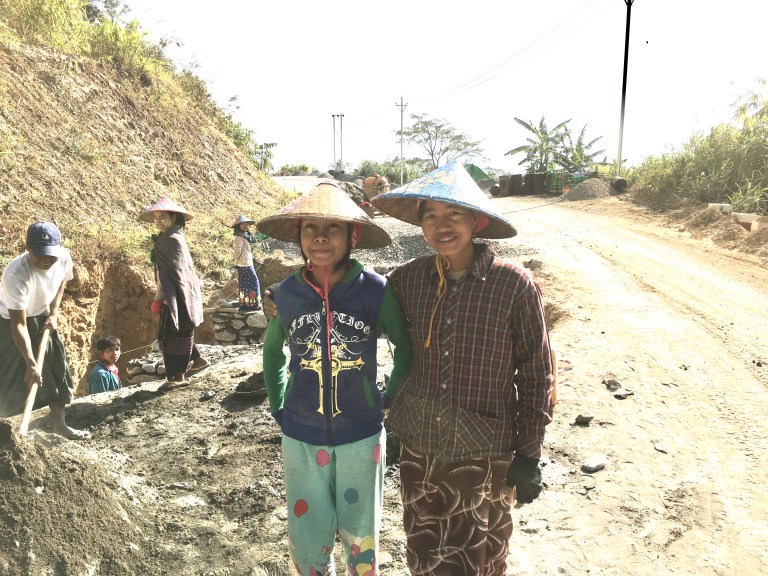



Looks stunning Davey. You find such great places, that most of us have never heard of. Keep safe, keep smiling. Xxx
LikeLiked by 2 people
Davy, your description was so moving. I feel proud of what you have achieved. Thank you.
LikeLiked by 1 person
Wonderful photos and script again .Following you on a map takes a while you must have spent a long time researching your route you seem to be covering ground quite qiuckly considering the topography.Looking forward to the next episode
Joe and Alison
LikeLike
Thanks Joe and Alison. Hope you are having fun in Goa. You probably found it but you can see where we were each night on Where we are page on our website. There is also a link to our GPS tracker on that page too. See you soon. Dave and Warty
LikeLike